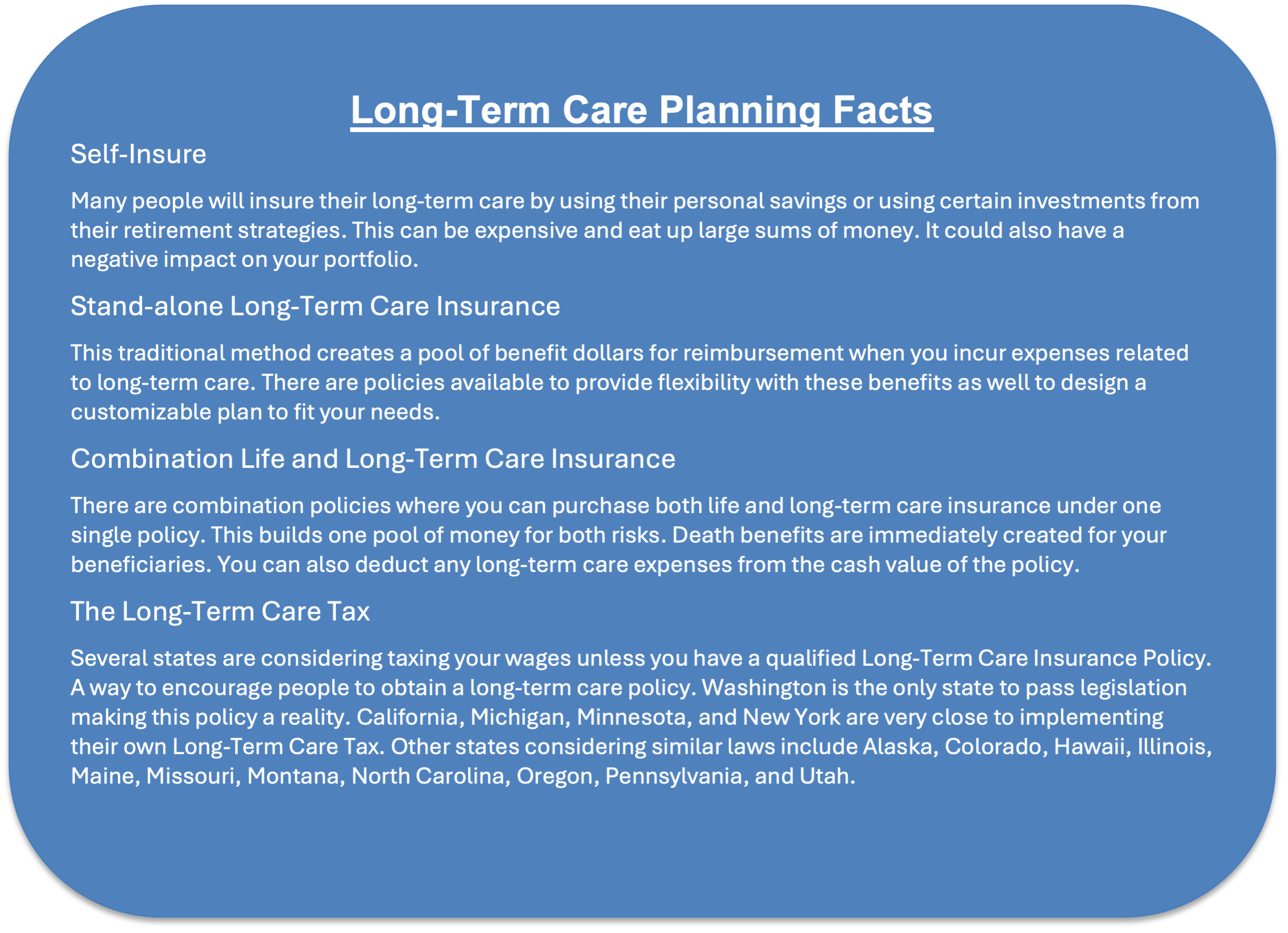Time to Consider Long-Term Care
According to Census Bureau, 73 million baby boomers will be 65 and older by 2030. Therefore, the demand for long-term care services is expected to grow rapidly in the coming years. It’s advisable to plan for long-term care needs.
Without a plan, the cost of long-term care can be very expensive and quickly add up. Depending on the state and facility, out-of-pocket costs could be upwards of $200 per day for skilled nursing care. Another alarming stat is that there is a 70% chance that someone turning 65 will need some long-term care services.
It’s important to understand what long-term care provides as well as who may need long-term care.
What Will Long-Term Care Do?
Most people don’t think about long-term care until they or a loved one needs it. Long-term care is a type of care that includes:
- Personal and medical care services for people with chronic illnesses or disabilities.
- Designed to meet a person’s health or personal care needs during a short or long period of time
- Available at your home, in the community, or in institutional settings such as nursing homes or assisted living facilities.
- Services that help people live as independently and safely as possible when they can no longer perform everyday activities on their own.
Who Needs Long-Term Care?
A safe assumption by many is that long-term care is something to worry about later in life. As people age, their physical and mental capabilities decline. Many different people may require long-term care such as those who:
- Have an ongoing or degenerative health condition
- Suffer a disability from a medical emergency (i.e., heart attack, stroke, accident, etc.)
- Require permanent care during later stages of dementia
Long-Term Care Insurance (LTCI) Policy
As the name suggests, LTCI is insurance that helps cover the cost of long-term care services. Enrolling in an LTCI policy when you are younger and healthy is important to keep premiums down. Doing so can also keep your benefits as high as possible.
Most LTCI policies have a waiting period before benefits kick in. This is usually around 90 days. After the waiting period, the policy will cover a certain amount per day for a set number of years. Some LTCI policies also have an inflation rider. This helps to keep up with the rising cost of long-term care services. The younger you are and if you’re relatively healthy when you buy an LTCI policy, the less you will pay in premiums.

“It Won’t Happen to Me”
You can live in the hope that you are in the 30% chance of not needing long-term care services. But this is not a good enough reason to forego a long-term care plan. Without a plan, you will have to pay for long-term care services out of pocket. These costs can quickly add up and be very expensive.
For example, the average cost of a private room in a nursing home is around $100,000 per year. The cumulative expenses can quickly change your savings and leave you financially struggling in retirement. Additionally, Medicare does not cover most long-term care services.
Planning for long-term care needs is important to ensure that you are prepared for the future. Check out this Cost of Care Survey for more information about the importance of Long-Term Care and their costs. As always, I’m always available to answer of your questions.



